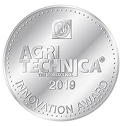
Our vineyards' soil quality and resilience are topics of increasing concern. Fortunately, the game is changing with the arrival of robots and their impact on mechanical weeding strategy. However, it is crucial not to overlook fundamental principles.
Mechanical weeding is now coming back as a solution to weeds.
Mechanical weeding in South of France.
The Robot Ted helps on reducing soil compaction.
Robotics in vineyards has quickly been seen by winemakers as a solution to manage weed growth without resorting to spraying herbicides on the rows. Due to regulatory constraints on herbicides, but also following increasingly pressing societal demands, conversions to organic viticulture have increased. The majority of users of the Ted straddle carrier, and more recently the crawler JO (launched in the summer of 2022), are not always organic but have found a way to reduce the frequency of treatments, particularly on herbicides.
Mechanical Weeding is rising
It is clear to many stakeholders in the wine industry that adopting an agro-ecological approach to production is not only in line with the future but is also a wise mindset. While it is true that this approach may require significant investments such as additional straddle carriers, tractors with frames or tool holders. Labour shortages concerns rise quickly. “We can’t even find tractor drivers anymore“: this is the most common phrase heard in mechanized vineyards around the world. In fact, with the often very narrow climatic windows faced by vineyards worldwide. Embracing mechanical weeding technology means more workers are needed. Therefore, the tireless robot takes its place as a beast of burden in the 21st century and finding numerous skilled employees is no longer a major concern.
How energy sobriety drives…
From the design of the first version of the Ted viticultural robot, Naïo Technologies’ teams have thought of producing an efficient machine with a limited weight. The second version of Ted, presented in 2020, kept this philosophy while increasing its capabilities. Developed with the help of the French Institute of Vine and Wine near Gaillac (France), it weighs only 2.1 tonnes. A clear difference from tractors or straddlers that approach 5 tonnes empty.
Viticultural robots are thus an opportunity to provide more resilience to the soil by reducing compaction. This is particularly important in wet periods when the premature return of tractors will inevitably create ruts and deleterious compaction that are difficult to correct to ensure good plant physiological functioning. Robots have the advantage of being able to return to the plot more quickly after rains. Nevertheless, it is important to demonstrate energy efficiency in viticulture.
…the essential need for low weight
The weight of batteries is the enemy of efficiency. With less than 40 kWh of battery, the Ted weeding robot carries enough energy to last for a day’s work. The race for autonomy can oppose the necessary respect of soils. That’s why it’s important to remain vigilant in the design of robots and not exceed 500 kg of batteries on a weeding robot. This is to avoid reproducing the consequences of the heavy machines experienced by tractors, as well as cars – whether thermal or electric – that have gained weight over the years. Likewise, the mitigation of compaction by the choice of tires does not solve the problem caused by the initial overweight. This is particularly true for deep-seated compactions related to axle load. The equation is certainly not simple, but being lighter remains the best way to preserve good soil breathing and the biodiversity of microorganisms present. Let’s ensure that in our soils and in our vineyards, the visible heritage and the living heritage under our feet will be all the better for it!
Flavien Roussel, former agronomy and machinery field reporter.
Know more avour our autonomous crawler Jo, designed for narrow vineyards
Any question ? Contact us









